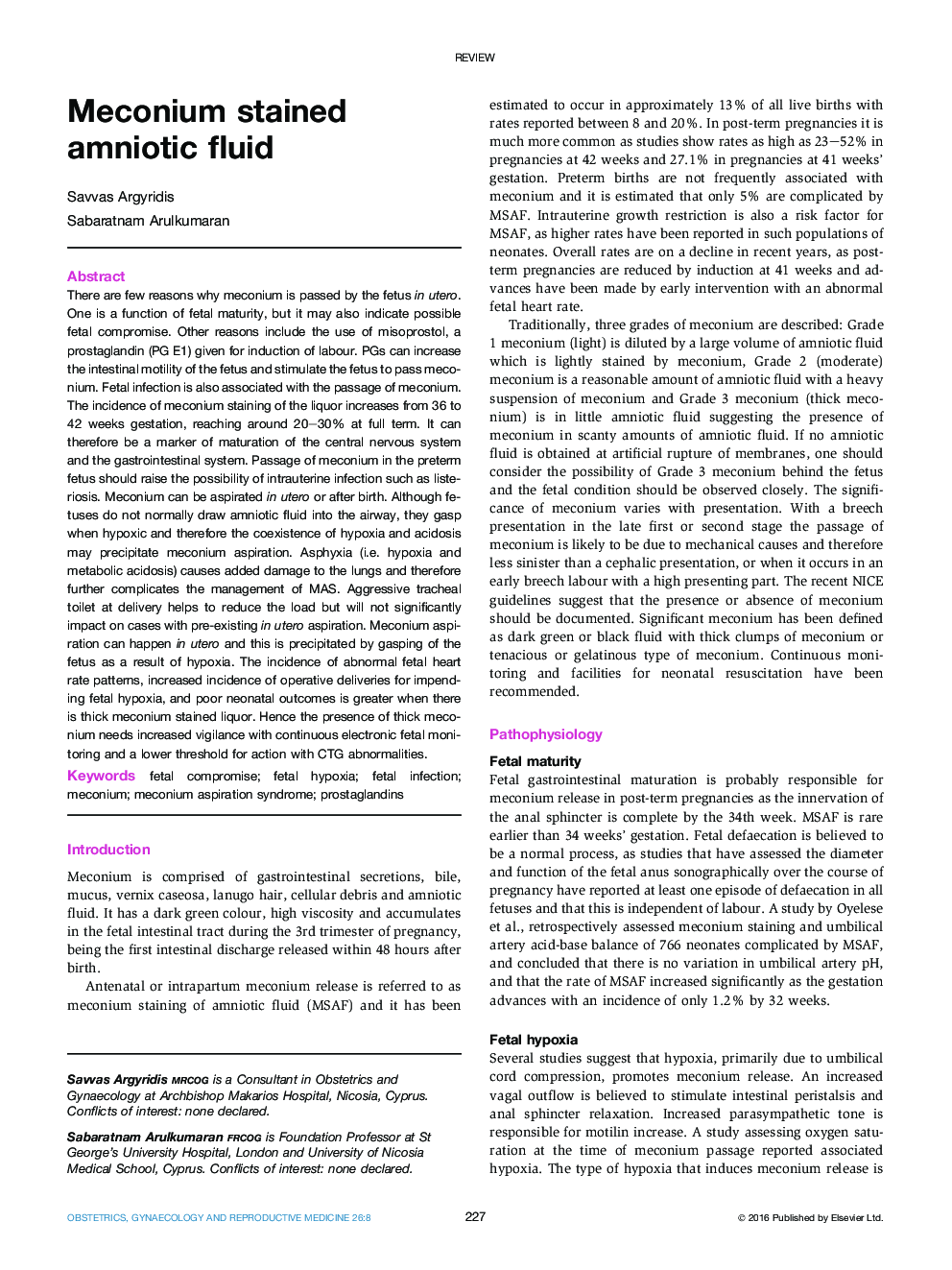| کد مقاله | کد نشریه | سال انتشار | مقاله انگلیسی | نسخه تمام متن |
|---|---|---|---|---|
| 3966536 | 1256166 | 2016 | 4 صفحه PDF | دانلود رایگان |
There are few reasons why meconium is passed by the fetus in utero. One is a function of fetal maturity, but it may also indicate possible fetal compromise. Other reasons include the use of misoprostol, a prostaglandin (PG E1) given for induction of labour. PGs can increase the intestinal motility of the fetus and stimulate the fetus to pass meconium. Fetal infection is also associated with the passage of meconium. The incidence of meconium staining of the liquor increases from 36 to 42 weeks gestation, reaching around 20–30% at full term. It can therefore be a marker of maturation of the central nervous system and the gastrointestinal system. Passage of meconium in the preterm fetus should raise the possibility of intrauterine infection such as listeriosis. Meconium can be aspirated in utero or after birth. Although fetuses do not normally draw amniotic fluid into the airway, they gasp when hypoxic and therefore the coexistence of hypoxia and acidosis may precipitate meconium aspiration. Asphyxia (i.e. hypoxia and metabolic acidosis) causes added damage to the lungs and therefore further complicates the management of MAS. Aggressive tracheal toilet at delivery helps to reduce the load but will not significantly impact on cases with pre-existing in utero aspiration. Meconium aspiration can happen in utero and this is precipitated by gasping of the fetus as a result of hypoxia. The incidence of abnormal fetal heart rate patterns, increased incidence of operative deliveries for impending fetal hypoxia, and poor neonatal outcomes is greater when there is thick meconium stained liquor. Hence the presence of thick meconium needs increased vigilance with continuous electronic fetal monitoring and a lower threshold for action with CTG abnormalities.
Journal: Obstetrics, Gynaecology & Reproductive Medicine - Volume 26, Issue 8, August 2016, Pages 227–230
